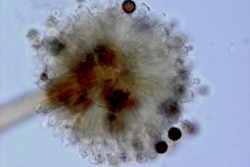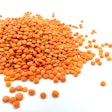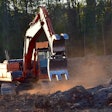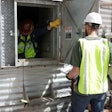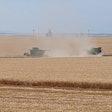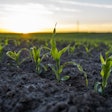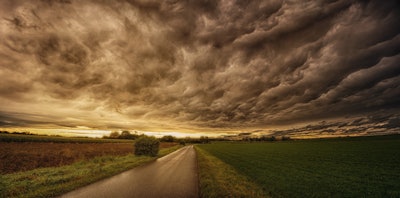
When it comes to agricultural production, weather is king. It can make or break a crop season.
In Winter 2021/22, we've been experiencing a La Niña, said James J. Garriss with Browning Media, at last December's National Grain and Feed Association (NGFA) Country Elevator Conference (CEC) held in Chicago.
And as the Earth tilts toward the sun again and we begin to exit winter, La Niña conditions will continue, but they will transition into neutral conditions sometime this spring. According to Climate.gov, there’s about a 60% chance the late spring and summer will feature neutral conditions.
This is our second La Niña in a row, and it's a trend that's happening more and more, says Garriss.
"The La Niña phase has reached its peak," says Garriss. "Cold anomalies are now expected to start weakening in early 2022, but the weather influence will last well into the spring season.
"A transition to a neutral phase is expected by mid-year, with an El Niño expected to finally emerge in fall, ready for the cold season of 2022/23."
What are El Niños and La Niñas?
According to the USDA, the El Niño–Southern Oscillation, or ENSO, is the interannual fluctuation of the atmosphere-ocean system in the equatorial Pacific. It has three phases: warm (El Niño), cold (La Niña) and neutral.
Although El Niño is considered the warm phase of ENSO and La Niña the cold phase, they are not considered opposites because they occur with differing magnitudes, spatial extent and duration. The impacts on the U.S. are neither equal nor opposite.
El Niños and La Niñas occur semi-regularly at intervals of two to five years, and usually last from nine to 12 months. The large pools of warm or cold water produced in these events change atmospheric pressure patterns in the tropical Pacific region and global wind patterns far from the tropics.
This leads to statistically observable changes in temperature and rainfall patterns that vary by ENSO phase in many areas of the world.
What does this mean to agricultural production?
"We are experiencing La Niña conditions this winter, creating a cooler and dry winter with severe storm risks," says Garriss.
Unlike some past La Niña that were more difficult to track, the current cold-water trend of this winter's La Niña is following a definitive track toward moderate strength, says Garriss.
"La Niñas have a tendency to create corn belt freezes," he explains. "They have the potential to be more dry and create cooler weather.
"La Niñas create more fluctuation in rain patterns which increases flooding in some areas and drought in others."
The main positive effect associated with La Niña is the increased likelihood of above-average rainfall, Garriss says.
"This can be particularly important for drier parts of the world because this additional rain can result in higher crop yields and improved pasture."
On the other hand, excessive rainfall induced by La Niña, can also result in flooding of farming land and pastures, he notes.
"Specific negative impacts of those floods include landslides and soil erosion, the washing away of seeds, damage or loss of standing crops, increased livestock mortality, and emergence of pests."
You might see 60-degree t-shirt weather then a swing 15 degrees cooler the next day.
"La Niñas make weather predictable in their unpredictability," he explains.
Spring impact in North America
La Niñas conditions will push more precipitation along the Midwestern U.S. leaving other parts of the country with dealyed winter weather. More cold and wet weather will sweep through North America as late winter approaches.
There are several impacts we might see this spring from La Niña:
- La Niñas normally raises crop prices and create more fluctuations in energy markets, especially with the record-breaking prices
- Spring freezes are more common during La Niña, especially in the Great Lakes region, thanks in large part to cooler Great Lakes temperatures and fluctuating jet stream patterns
- During winter, the corn belt will have some very strong, severe storms
- In general, more rainfall can be expected
Global impacts
Because of these weather patterns, Asia, particularly China, is going to have good crop growing weather this year.
"They may make up for any and all lost productivity that they've had in recent seasons," predicts Garriss.
South America is going to be hit even worse by La Niña with dry conditions for their fall-winter.
"Paired with the pandemic, productivity will go down due to lack of resources, lack of people and bad weather," says Garriss. "I predict South America's going to have a very low crop output this year."
Late fall, South America will finally get some decent precipitation. "Unfortunately, too little, too late," he notes. "Rainfall could create some flooding during their fall harvest."
La Niña will also impact an already struggling global supply chain. In 2011, a moderate to strong La Niña created flooding nightmares for southeastern Asia. With $45 billion total economic cost of the floods, including damage to global supply chains.
Characteristics of La Niña
- Ocean temperatures of 4˚ to 6˚ F below average are observed in the eastern Pacific Ocean
- Cold water in the eastern Pacific shifts the location of thunderstorms, rising air, and lower pressure to the western Pacific
- Cold water from the deep ocean provides increased nutrients for fish and plankton, leading to improved fishing and to sustenance for birds and other predators in the eastern Pacific Ocean
- Pressure shifts cause the subtropical jet stream in the U.S. to shift north
- La Niña can last for one to three years
For more information

James J. Garriss began his career with The Browning Newsletter when he was four years old, photocopying jet stream maps from the stacks of various University of New Mexico libraries.
He has now been a partner in the business for more than six years. As the third generation in the business, he is helping to lead a new direction in historical climatology, bringing a fresh economic perspective to the company.
With an academic background in international business, he is a writer, editor and researcher for Browning Media LLC, helping to present accurate climatological projections for myriad U.S. and international agricultural, financial, insurance and energy companies.
He has worked and studied in multiple countries, becoming business fluent in Spanish and Portuguese. Garriss now presents an enhanced international perspective to weather, climate and its impact around the globe.




